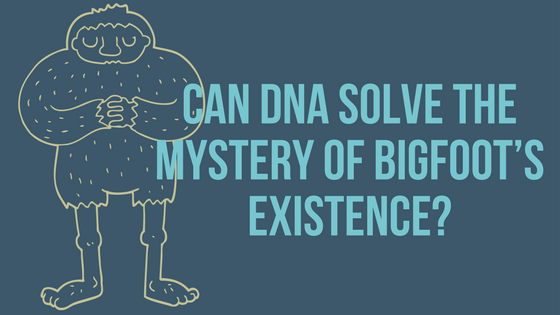Editor’s Note: Though known by different names, versions of the legends of a half man/half ape creature have existed for many centuries in almost every corner of the globe (with the exception of Antarctica). Whether you know him as Yeti, Sasquatch, or by another name, chances are you’ve heard of him. Those in the northwest United States refer to the creature as Bigfoot, and he’s described to be between six and eight feet tall. He has a large forehead and a pronounced brow like a cave man might, and a rounded, crested head like a gorilla. He is covered in brown or red hair, and of course, he has gigantic feet, which lend him his name, ranging up to two feet long by eight inches wide.
The Bigfoot legend existed in the Pacific Northwest long before the area was colonized. Versions of the story ranged from a harmless giant who stole from fisherman’s nets to cannibalistic monsters living on mountain peaks. Throughout the years, various people have claimed to have discovered evidence of Bigfoot’s existence, or have claimed to have seen him with their own eyes, but definitive proof has never been offered.
If you’d like to join the hunt, there are many places in Washington state where Bigfoot has been claimed to have been spotted. The highest number of Bigfoot sightings (69) have been reported close to Mt. Rainier. If you’d like to make a side trip while in the area during ISHI, click here for a list of other popular locations.
Written by: Terri Sundquist, Promega
A good scientist always keeps an open mind, even when faced with an observation or hypothesis that seems, shall we say, far-fetched. This can be difficult at times, especially when there is little supporting scientific evidence. Maybe that’s why the field of cryptozoology doesn’t get much respect in the scientific community. Cryptozoology is literally translated as “the study of hidden animals” and encompasses efforts to find and identify animals whose existence is unproven, including the Loch Ness Monster, Chupacabra and Bigfoot. These “cryptids”, as they are called, often appear in folklore or legends, but there is little definitive physical evidence to support their existence. The evidence includes unsubstantiated eyewitness accounts, grainy photographs, mysterious tracks or unidentified hair. Despite this, some open-minded scientists at the University of Oxford and Musée de Zoologie in Lausanne, Switzerland, are teaming up to examine biological evidence that cryptozoologists claim support Bigfoot’s existence. Their project, named the Oxford-Lausanne Collateral Hominid Project, involves DNA testing and may provide some answers.
For decades, people have reported sightings of mysterious bipedal, often fur-covered, primates. In the Himalayas, this creature goes by the name Yeti or Abominable Snowman; in the United States, Bigfoot; in Canada, Sasquatch and in Sumatra, Orang Pendek. Some people report collecting hair or tissue samples that these creatures left behind. It is these reports of biological evidence that caught the attention of geneticist Bryan Sykes and Michel Sartori, who together created the Oxford-Lausanne Collateral Hominid Project. Earlier this year, they challenged cryptozoologists to submit descriptions of their most compelling biological evidence for the existence of Bigfoot. From these submissions, they chose the most promising samples to perform DNA testing, which is scheduled for September through November. The team hopes to report their final results near the end of the year.
Do these scientists expect to find Bigfoot DNA? Not necessarily, although they are trying to keep an open mind. There are several possible outcomes to the DNA analysis. In my opinion, the most likely outcome is that DNA isolated from these samples matches DNA of a known species. Many images taken of Bigfoot are attributed to bears, so a DNA match with bears would not be surprising. The DNA could also match humans, as was done recently for a yeti finger preserved at a Nepalese monastery. The DNA analysis also might be inconclusive—maybe due to DNA degradation or insufficient DNA yield. The most intriguing outcome is the discovery of a true hominid species. In an interview with LiveScience, Sykes admitted “It would be wonderful if one or more [samples] turned out to be species we don’t know about, maybe primates, maybe even collateral hominids.” Within the past 50,000–100,000 years ago, several species of hominids walked the earth, including Neanderthals, Homo floresiensis, which was nicknamed the Hobbit and could have been alive as recently as 12,000 years ago, or Denisovans, a hominid that lived in Asia about 40,000 years ago. Did one of these species escape extinction and manage to survive relatively undetected?
Will the Collateral Hominid Project provide an answer? Maybe. Maybe not. If the DNA sequence points to a previously unknown hominid or a hominid assumed to be extinct, this is strong evidence that a Bigfoot-like creature exists. However, if the DNA matches a known species, we can conclude only that these samples are not derived from Bigfoot, but we still cannot say with certainty that Bigfoot is only a myth, a hoax perpetuated by humans dressing up in furry costumes and loping through the wilderness to be captured in poor-quality photographs. We can only say that we have not collected definitive evidence. Absence of evidence is not evidence of absence.


